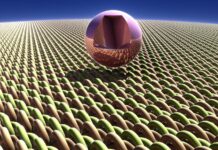Cleaning tablets, often referred to as cleaning or effervescent tablets, are convenient and efficient solutions for a variety of cleaning tasks. These tablets are designed to dissolve in water, releasing active cleaning agents that help remove dirt, stains, and grime from various surfaces. They have gained popularity due to their ease of use, portability, and versatility in addressing different cleaning needs. Here is an in-depth exploration of cleaning tablets, highlighting key aspects that encompass their features, benefits, applications, limitations, and potential.
Composition and Functionality: Cleaning tablets are composed of a combination of active cleaning agents, detergents, surfactants, and sometimes enzymes. When these tablets are dissolved in water, they create a cleaning solution that effectively breaks down and lifts away dirt, grease, and stains from surfaces.
Ease of Use and Convenience: One of the main advantages of cleaning tablets is their ease of use. Users simply need to drop a tablet into water to create a cleaning solution. This eliminates the need to measure out liquids or powders, reducing the chances of overusing or wasting cleaning products.
Versatility in Applications: Cleaning tablets can be used for a wide range of cleaning tasks. They are commonly employed for household cleaning, including surfaces like countertops, floors, sinks, and bathrooms. Moreover, they are also utilized for cleaning items such as dishes, glassware, jewelry, and even appliances.
Reduced Packaging Waste: Many cleaning tablets come in compact, individually wrapped packaging, which reduces the need for bulky bottles and excessive plastic waste. This aligns with eco-friendly practices and contributes to minimizing environmental impact.
Portability and Storage: The compact nature of cleaning tablets makes them highly portable. They take up less space than traditional cleaning products, making them ideal for travel or storage in small living spaces.
Consistent Formulation: Cleaning tablets provide consistent cleaning results with each use. Unlike liquid cleaners that may require careful mixing or dilution, tablets ensure that the appropriate amount of cleaning agents is used every time, resulting in predictable and effective cleaning outcomes.
Specialized Formulations: Cleaning tablets often come in specialized formulations tailored to specific cleaning needs. For instance, there are tablets formulated for different surfaces like glass, stainless steel, or fabrics. There are also tablets designed for specific tasks, such as descaling, disinfecting, or removing tough stains.
Limitations and Considerations: While cleaning tablets offer numerous benefits, there are limitations to be aware of. Some heavily soiled or deeply ingrained stains might require more concentrated or specific cleaning solutions. Additionally, not all surfaces are suitable for cleaning with certain tablet formulations. It’s essential to read manufacturer instructions and test a small, inconspicuous area before widespread use.
Future Innovations: As cleaning technology evolves, cleaning tablets are likely to see further innovations. This could include improved biodegradability and sustainability, enhanced formulations that tackle even more diverse cleaning challenges, and smarter packaging designs that minimize waste.
Cleaning tablets have emerged as a convenient and effective solution for a variety of cleaning tasks. Their ease of use, versatility, and reduced packaging waste make them an attractive option for both household and commercial cleaning needs. While they might not replace all traditional cleaning products, their potential for continued innovation positions them as a promising component of modern cleaning practices.
Cleaning tablets, known as effervescent or cleaning tablets, have become a popular choice for tackling various cleaning tasks due to their convenience and efficiency. Composed of active cleaning agents, detergents, and surfactants, these tablets dissolve in water to create a powerful cleaning solution that effectively removes dirt, grime, and stains from surfaces. Their simplicity of use is a major advantage, as users only need to drop a tablet into water to activate the cleaning process, eliminating the need for measuring out liquids or powders.
Versatility is a key characteristic of cleaning tablets, making them suitable for a wide array of applications. They are commonly utilized for household cleaning, effectively scrubbing surfaces like countertops, floors, sinks, and bathrooms. Beyond this, they have proven valuable in cleaning items such as dishes, glassware, jewelry, and even appliances, showcasing their adaptability to different cleaning needs.
One of the noteworthy benefits of cleaning tablets is their contribution to reducing packaging waste. With many tablets being individually wrapped or provided in compact packaging, the need for large plastic bottles is minimized. This aligns with environmentally conscious practices, which are becoming increasingly important in today’s context.
The portability and storage advantages of cleaning tablets cannot be overlooked. Their compact size and minimalistic packaging make them highly portable, suitable for travel or storage in homes with limited space. This convenience is further enhanced by the consistent formulation of these tablets. Unlike traditional liquid cleaners that require careful measurement, cleaning tablets ensure a consistent cleaning outcome with each use.
Specialized formulations are another notable aspect of cleaning tablets. Manufacturers often tailor their tablets to address specific cleaning needs, such as glass surfaces, stainless steel appliances, or fabrics. Some tablets are even designed to target specific tasks like descaling, disinfecting, or removing stubborn stains. This specialization enhances their effectiveness and applicability across a wide range of cleaning scenarios.
However, it’s important to acknowledge the limitations of cleaning tablets. While they offer a practical solution for many cleaning tasks, heavily soiled or deeply stained surfaces may require more concentrated or specialized cleaning agents. Additionally, not all surfaces are suitable for cleaning with certain tablet formulations, highlighting the importance of reading manufacturer instructions and conducting spot tests before widespread use.
Looking to the future, cleaning tablets are poised for further innovations. As consumer demands for eco-friendly products rise, cleaning tablets may see advancements in biodegradability and sustainability. Additionally, enhanced formulations that address even more diverse cleaning challenges could emerge, providing users with effective solutions for various surfaces and materials. The potential for smarter packaging designs that minimize waste is also a possibility, aligning with the broader trend towards sustainability.
In conclusion, cleaning tablets have introduced a new level of convenience and efficiency to the realm of cleaning. Their straightforward usage, versatility, and eco-friendly packaging make them a compelling choice for both residential and commercial cleaning needs. While they may not completely replace all traditional cleaning products, their potential to evolve and adapt to changing consumer preferences positions them as a valuable component of modern cleaning practices.


















